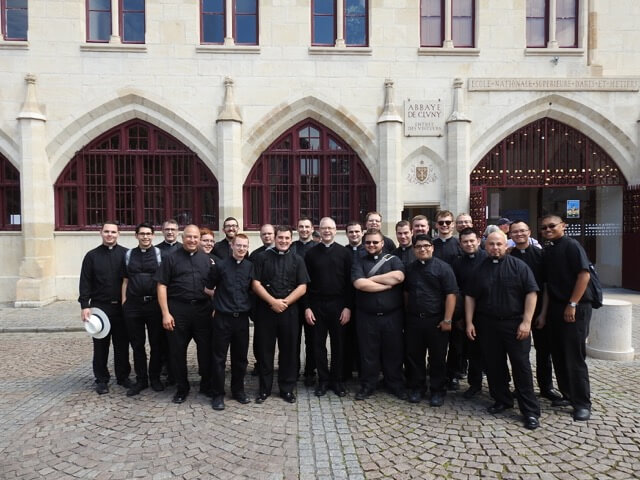“Top Five” 2016: Week One
1. On Wednesday, during our unplanned layover in Madrid, Spain, we prayed and had Mass in the airport’s chapel, then visited the world-renowned Prado Museum of Art and the Cathédrale de l’Almudena de Madrid. On the way to the Prado, walking the sidewalks into the heart of Madrid, Fr. Nielsen explained to us the museum’s importance; but when we arrived, we realized what he meant firsthand.
Inside were some of the most notable original works of Francisco de Goya, Fra Angelico, and El Greco, among countless others. From there, framing the experience of the museum, we journeyed through the city and the Plaza Mayor (a large cobblestone square full of shops, playing children, commuters, elders caught up in conversations) into Madrid’s cathedral, where we were able to pray, rest, and reflect for awhile before our flight to France.
2. On Thursday morning we boarded our bus from the retreat center which sits at the edge of Ars, and we traveled through Ars’ narrow streets, past the baker and her morning deliveries, and then into the vast fields of the French countryside.
We arrived in Paray-le-Monial, where St. Margaret Mary Alacoque received visions of Jesus’ Sacred Heart and where her spiritual director, St. Claude de la Columbière, lived for a time. We visited St. Margaret Mary herself in the monastery church, the Jesuit church where St. Claude’s relics are reposed, and the very room within which she received one of her visions of the Sacred Heart of Jesus. Among other things, we prayed that St. Claude petition the Lord on our behalf for the grace to be good spiritual directors.
3. That afternoon we journeyed from Paray-le-Monial to Cluny, to the Benedictine monastery that had left its profound mark of reform upon the Benedictine Order, Western Christianity, and arguably the world. We walked among its massive ruins, awed and ever lamenting the fact that the French Revolution had singlehandedly turned this church of over a thousand years into a quarry, a church which in its prime was the largest in the Christendom until St. Peter’s in Rome was renovated.
In the still-standing granary of the monastery, Fr. Nielsen pointed out the ancient support beams, eclectic in length and angle but unified, noting that each carpenter working on each beam would “read” his piece of lumber and bend it according to the qualities of the wood itself. This unity in diversity brought an even greater strength to the roof than if the monks had “mass-produced” the beams as is done today, and Father spoke of this in analogy to the diocesan priesthood. The priest is given an apostolate, ideally he knows himself and his individual parish, and he and his parish will not look exactly like the families and priest down the road; yet the parish priest is called to “bend” himself in obedience and direct the parish in accord with the mission of the bishop’s shepherding, and in so doing the diocese as a whole has a unity and strength beyond artificial manufacturing.
4. On Friday morning we traveled to the Basilica of Notre Dame de Fourvière in Lyon. Here we prayed a Rosary in front of the main altar, at the statue of Our Lady of Fourvière. The intricate mosaics, the dark wood, the green and blue and gold and violet, the ornamented marble – all of it suggested an elaborate “thank you” to the Lady who had saved the city on so many occasions. In the crypt, we found numerous devotions to our Lady, as well to St. James and, on the main altar, to St. Joseph.
5. Then we drove back toward Ars, and at the village of St. Euphémie we unloaded, put on our backpacks, and walked the road toward Ars that St. John Vianney himself walked when he was going to Ars for the first time.
We had an up-close view of the sights, smells, and sounds of the French countryside as we walked down the road, even at this point in history, very narrow. We stopped for lunch at a statue commemorating this first journey of St. John Vianney, which depicted him speaking with the young shepherd-boy Antoine Givre. When St. John Vianney had made his journey, he ran across Antoine and asked him the way to Ars; when the boy pointed out the way, St. John Vianney replied, “You have shown me the way to Ars, and I will show you the way to heaven.”
After lunch, we walked the rest of the way into Ars, and we were able (as we were a few times before) to visit St. John Vianney himself in the basilica in Ars and see the confessional where he spent most of his day hearing penitents. We all returned to the retreat center and began our silent retreat.
Rick Childress
The Rome Experience Class of 2016
Diocese of Nashville


